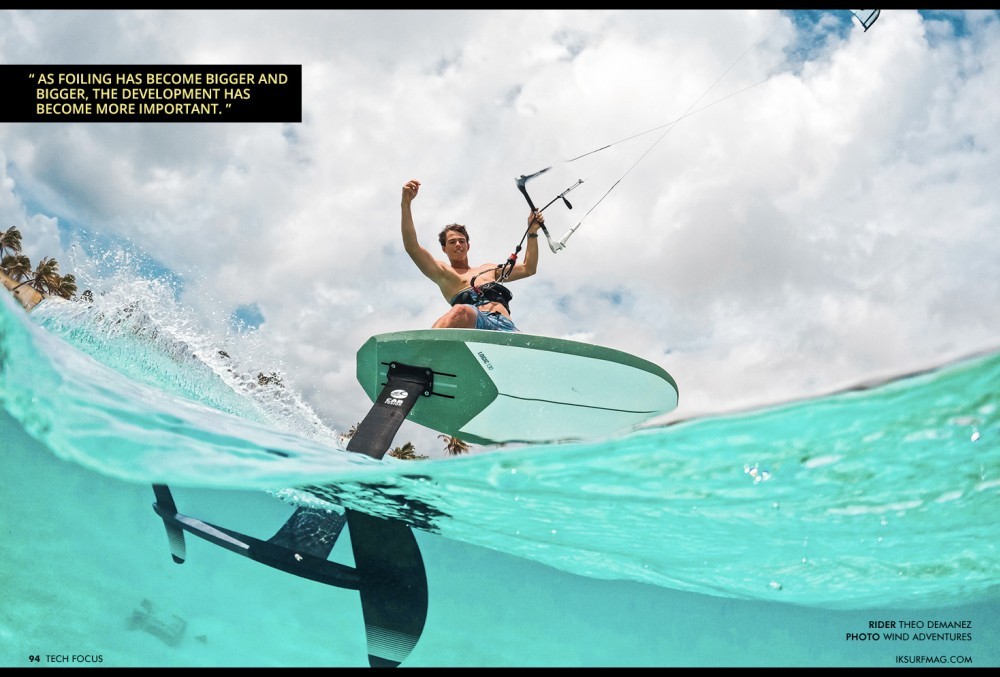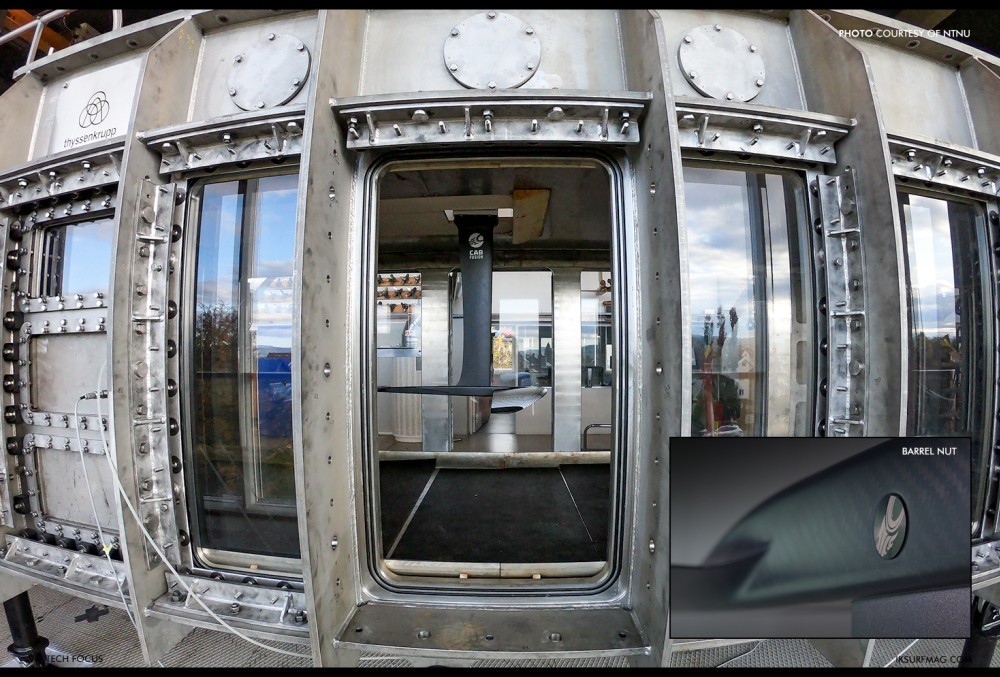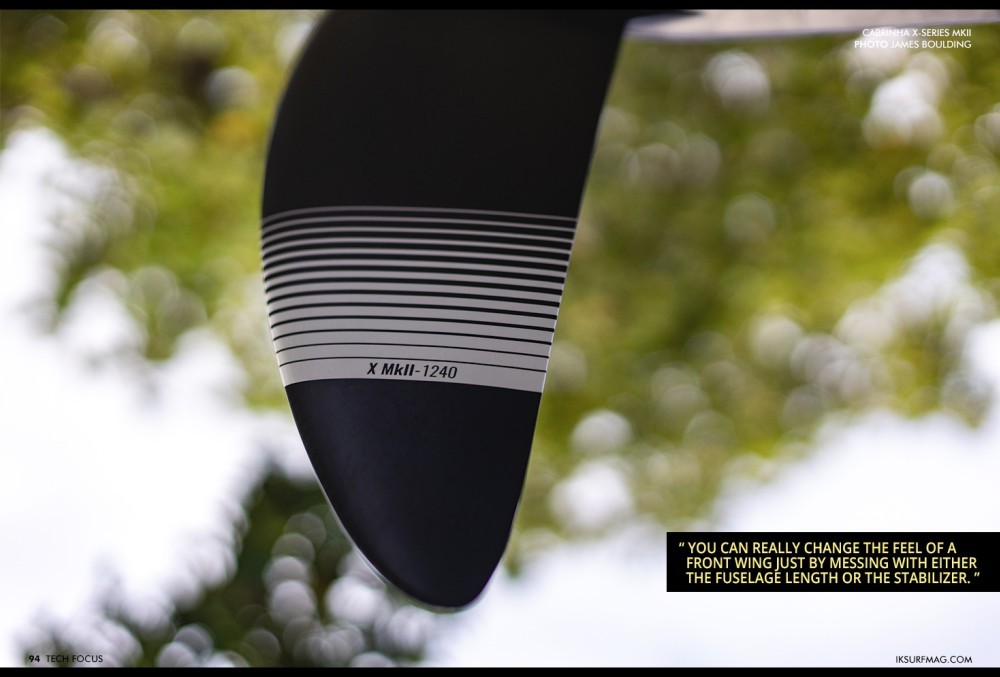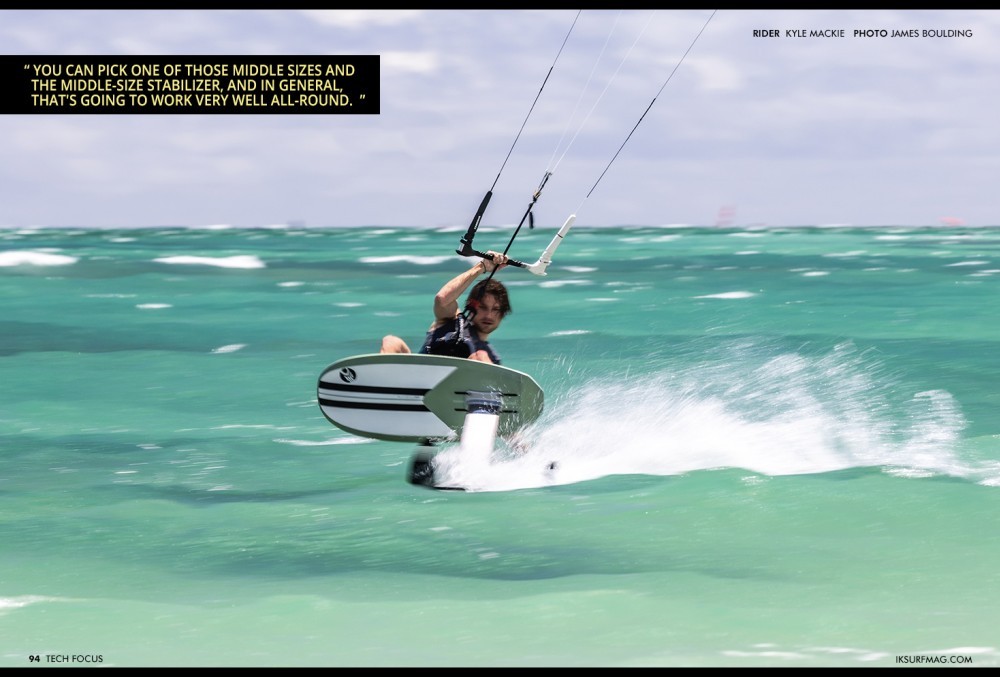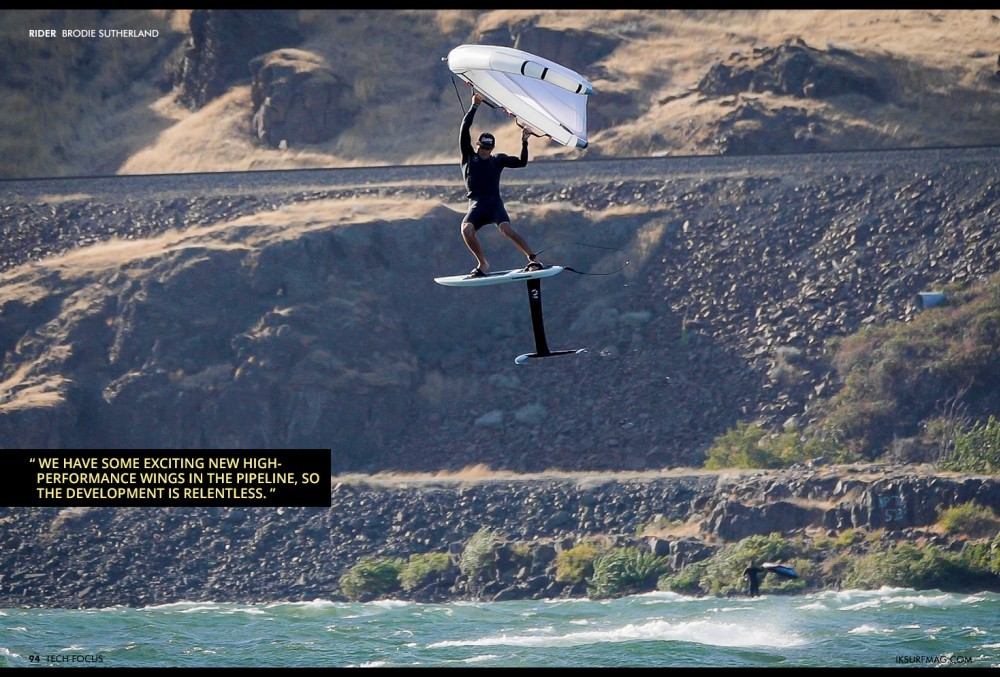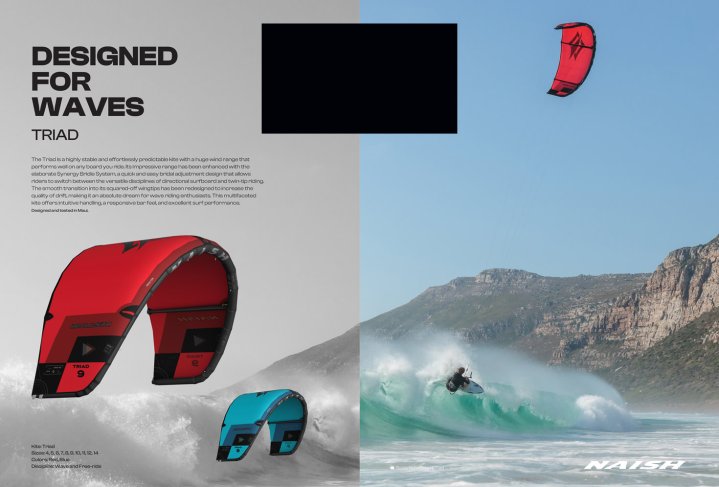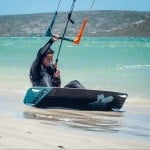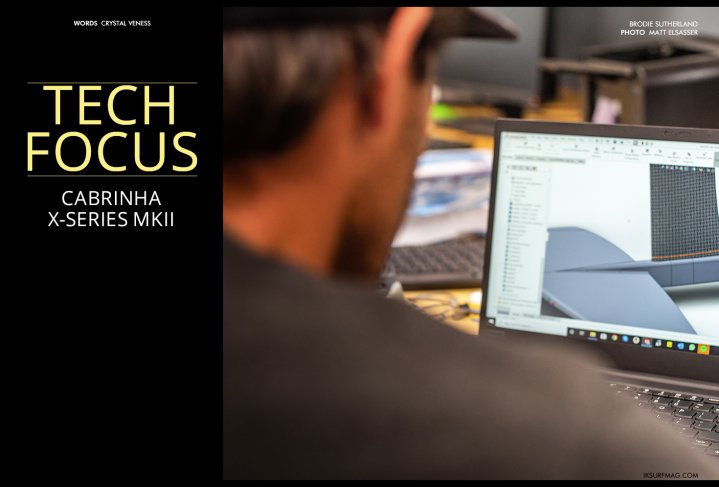
Tech Focus: Cabrinha X-Series MKII
Issue 94 / Tue 9th Aug, 2022
Cabrinha's re-designed foil system, the Cab Fusion, is about to add an all-new front wing to the lineup! In this Q&A, we find out what's new in the X-Series MKII and go behind the design with Brodie Sutherland!
Brodie, when we last spoke, you were working with Cabrinha as a kite and foil designer, but a lot has changed since then! What is your main focus now?
I'm mostly working on the wings and foils now. We have Pat Goodman, the legendary kite designer, back at Cabrinha. I'm still contributing to a couple of the kite models, but for the most part, Pat's doing all the kites, and I'm responsible for wing and foil design.
When you initially joined the Cabrinha team, did you have a specific interest in foil design?
I came on wanting to be in the kite industry and began with the kite control system. The foils became kind of a natural progression, which I had an interest in. I was working with our product development manager on them and eventually ended up taking them over. As foiling has become bigger and bigger, the development has become more important.
Do you remember the first foil you designed, whether it was for Cabrinha or just as a hobby?
Haha, I actually made one in high school; that was some plywood that I sanded down into a foil shape and added a welded chunk of aluminum.
There is a big new release at Cabrinha that I'm sure foil lovers and your existing customers are very excited about. Can you give us an overview of the new X Series MK-II?
Yeah, so we were able to work with NTNU and a naval facility in Norway called SINTEF, from which we got a lot of data and research on our last version of this foil. With that, we designed a more efficient, performance-driven foil with a wide use range.
The idea with the new X-Series is, in the big sizes, to have a very entry-level foil that works for lots of people. For those who want a more performance-driven foil, the small sizes offer that. They're not insanely high performance; we have other models for that, like the H series, our high aspect wings, but the X-Series are an excellent all-around foil that performs well.
Our 2100, 1600, and 1240 will be bigger, more user-friendly, and ideal for winging, dock starts, or even stand-up paddling. The 930 and 700 would be higher performance options that would work great for kiting and winging. We've covered a whole range in 5 sizes, and I think we've achieved our goal of designing a fairly high-performance foil that's easy to ride.
Were there key areas of performance in the MK-I that you identified and wanted to improve upon in the new MK-II?
In the first version, one of the main points I noticed was when you breached the wingtip, it didn't handle that very well. It tended to ventilate, where air gets pulled down the bottom side of the foil, causing it to lose the lift, stall, and crash. With the new version, you can do turns with the wingtip out of the water, and it's a lot more efficient from that perspective.
For those familiar with the older model, the new MK-II would feel overall more efficient, easier to pump, cleaner turning, and an overall better platform.
Are the new MK-II front wings compatible with the Cab Fusion system?
Yes, it's all backwards compatible and works with the previous Cab Fusion components. We did do one upgrade, however, so instead of having three screws at the mast to wing connection at the bottom, there are now two screws in the bottom and one on the side, called a barrel nut, which is still compatible with the old mast.
This change adds stiffness to the whole system and more durability over time. We found that those tapered connections are really good for the first maybe year or two, but as you assemble and disassemble your foil, there's wear on all the parts, and that connection gets looser. So, by having that side bolt, it grabs the side of the mast, and you just have a much more stable connection for the long term.
So, if a Cab Fusion rider wants to upgrade to the new wing, they don't have to start over; they can just add a new front wing to their existing setup?
Yeah, exactly, so if you're already invested in the system, it's a marginal upgrade compared to buying a whole new foil. You can just get the new front wing and get a new feel from your ride without a huge investment.
It sounds like you can really tune your foil setup with just a few small changes. What are the extremes that you can achieve within the MK-II and Cab Fusion family?
Yeah, you can really change the feel of a front wing just by messing with either the fuselage length or the stabilizer. I guess the two extreme ends would be, say, the 700 with the short fuse and the 180 tail, which would be your tiniest, most maneuverable setup. You can imagine this like a really twitchy sports car. Then, if you were to go the far other end and take one of the big foils, like the 1600 or 2100, and put the huge tail on it with a super long fuselage, it would be an ideal first-time beginner setup for someone just starting out and looking for something as easy as possible. This is more like a train on train tracks and very locked in.
The Cabrinha development team is travelling a lot for testing, and nowadays, it seems like luggage issues seem to be quite significant. If you were going somewhere where you're doing multiple sports, whether it's kite foiling, wing foiling, surf foiling, pumping, whatever, and could bring only one setup that would work with just about everything, what would that be?
In general, if you look at our range, the middle of the range is based on the average rider in most conditions. So, you can pick one of those middle sizes and the middle-size stabilizer, and in general, that's going to work very well all-round. The top end is designed for light wind or going slow, and the other end is more for speed and performance.
Personally, I would probably take the X-Series MK-II in the 1240 or 930. I like the foil to be a bit looser, so I'd take the 180 tail. But, for more stability, the 230 is a good call. They don't weigh much, so I'd take both! I've been really liking the shorter fuselages because they're more maneuverable, but again, the mid-length offers up more stability. To keep it super simple, I'd take the 1240 and two tail wings, and that gives me a ton of options on how I want my foil to feel.
High-performance can be quite the intoxicating buzzword, but why should a consumer consider a more all-around, user-friendly foil?
Our more high-end H Series foils have been really popular, but the X-Series is for the majority of the market who needs versatility in a foil. People talk about high-performance foils versus beginner foils, but in general, if you have a foil that's easy to ride like the X-Series, it allows you to do more things than a high-performance one can. A high-aspect, advanced foil can sometimes be more difficult to ride.
I've heard that the jump in performance between the MK-I and MK-II is pretty significant. Can you share a bit of insight as to why?
When Cabrinha changed ownership and left The Pryde Group, the foil system was the first thing to change. We had foils, but they were quite basic, kite industry standard foils. The foil project was the first one that got a big investment from our new owners, who wanted our foil lineup to not just compete but become the best foils available on the market across all sports. The first Cab Fusion system was part of that first big engineering project, and we went back to the drawing board with a completely new approach - that's when we brought out the first X-Series. As soon as that was out, we were already working on the H-Series and all the smaller components. It was also at a key time when wingsurfing and SUP foiling was emerging, and we took a big decision to look at the main connection in the foil, the front wing to fuselage, and decide to make it one engineered piece to maximize the stiffness in the system. This is key when riding bigger wings or when loading the foil through turns or jumps.
With every project since moving to the Cab Fusion, we were able to bring our new findings into creating the new X-Series MK-II, which is a big leap from the original models.
What more can we expect from Cabrinha's foil program in the near future?
We have some exciting new high-performance wings in the pipeline, so the development is relentless. As we progress with our foils, it's also not just about the wings. There's the mast and fuselage that are key components, and we're constantly making small improvements here which have an impact on the feel of a foil.
By Crystal Veness
Editor at IKSURFMAG, Crystal Veness hails from Canada but is based in South Africa. When she isn't busy kitesurfing or reporting on the latest industry news for the mag, she is kicking back somewhere at a windy kite beach or working on creative media projects.




